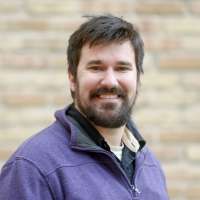Estimated read time: 5-6 minutes
- Salt Lake City Mayor Erin Mendenhall said the city is focusing on public safety and affordable housing this year.
- She highlighted a new public safety plan and efforts to build 6,500 affordable units since 2020 as ways the city has addressed the challenges.
- Mendenhall also discussed climate initiatives and ongoing projects like the Green Loop.
SALT LAKE CITY — Hosting a future Winter Olympics and other happenings have been at the forefront of Salt Lake City Mayor Erin Mendenhall's past State of the City addresses.
However, the mayor of Utah's largest city took a different approach this time around as she updated residents about city happenings.
While boasting a "landmark" year in which Salt Lake City landed the 2034 Winter Olympics and Paralympics and a National Hockey League team, Mendenhall focused her attention Tuesday on present-day issues like public safety and rising costs that have left thousands of residents "cost-burdened."
"The future of Salt Lake City is bright, but its present is urgent," she said, speaking from a podium at the Salt Lake City Public Library. "We continue the work we started — with resolve and with clarity — because the Salt Lake City of tomorrow depends on the decisions we make today."
Mendenhall pointed to a new public safety plan she unveiled earlier this month and recent affordable housing spending as examples of how those are being addressed.
Public safety and homelessness
The former was developed after Utah Gov. Spencer Cox and other state leaders called on the city to address policing and criminal justice "inadequacies."
"The ineffectiveness of (the Salt Lake City Police Department) has become glaringly apparent," the letter stated, in part.
Some details of the plan are already in motion. The mayor said Tuesday that the city has made a handful of significant arrests over the past two weeks, including a seizure of thousands of fentanyl pills, stolen guns and $1.5 million in concentrated THC. The city, she said, has also been more transparent about arrests, sending out more news releases about operations.
At the same time, she said the city is adding security services to make sure that visitors comply with curfews. Salt Lake City is also exploring a new park security camera program at its "high-volume" parks later this year, which aims to improve security.

The plan also called for more homeless resources. While city officials said crime and homelessness aren't always connected, they found nearly half of all the city's jail bookings last year involved someone reportedly unhoused.
Mendenhall said the city plans to continue its part in handling the "broken systems we've inherited." She said the city will help "expedite" the creation of at least 200 more homes within the Other Side Village that opened on the city's west side late last year.
The facility currently holds 32 "deeply affordable" tiny homes for people who have experienced chronic homelessness, but future plans call for more than 400 homes by the time it's built out.
Affordable housing
Affordable housing also became a key portion of Mendenhall's speech.
Salt Lake City's population grew to nearly 210,000 by mid-2023, according to the U.S. Census Bureau. That's up about 10,000 from the 2020 census, but the mayor said affordable housing hasn't kept up the same pace. It's left an affordable housing shortage of about 18,000 units, while nearly half of all renters — a group that now accounts for more than half of the city's residents — are "cost-burdened," meaning they spend more than 30% of their income on housing alone.
It's an issue that's pushed families out of the city, which Mendenhall had addressed last year.
However, the city is fighting back. She said 6,500 affordable units have now been built or funded since 2020 through $122 million in city funding, including 684 family-sized units, which are three-bedroom or larger.
Mendenhall also called on the Salt Lake City Council to include $5 million more toward deeply affordable housing construction in upcoming budget discussions.
"Every unit we build, every dollar we invest, and every policy we implement moves us closer to a future where affordability isn't out of reach," she said. "Again, a future defined by the decisions we make today."
Other key issues
The mayor touched on a few other topics on Tuesday but offered very few updates to the massive downtown revitalization plan since the city approved an agreement with Smith Entertainment Group in October. The agreement is contingent on a lease agreement with Salt Lake County, which is still being worked out.
She referenced HB267 as well. The bill, which cleared the House of Representatives on Monday, would limit public sector collective bargaining and prevent union representatives from doing union work while on the clock in a public capacity. It could heavily impact city employees, as more than 60% belong to unions.
Salt Lake City is also on the cusp of approving a library union, adding to the total.
Only referring to it as "that bill," the mayor said it would not dissuade her from her "commitment to treating our workers fairly," including "competitive compensation" and "equitable benefits."
The city could also soon get to work on the proposed Green Loop. Last week, the City Council released $3.1 million in previously allocated funding to advance planning for a section referred to as the "civic campus," a section that includes Washington Square and Library Square on 200 East.
Mendenhall called on the City Council to approve another $3 million toward the section's construction in the upcoming budget planning. Sticking with a recreation theme, she said the city west side, which had no pickleball courts at the start of 2024, will have "twice as many" as the east side by the end of this year.
She added the city will bring back its landscaping equipment exchange program, as the demand has been "overwhelming" since it launched. That, along with the city's partnership with Utah Transit Authority on passes for students, parents and teachers that generated 593,000 transit trips last school year, are examples she noted of how the city is tackling air quality challenges.
"This is what real climate action looks like — not just policy but tangible change," she said. "Small actions, multiplied across our entire city, creating a lasting impact on the air we breathe."











